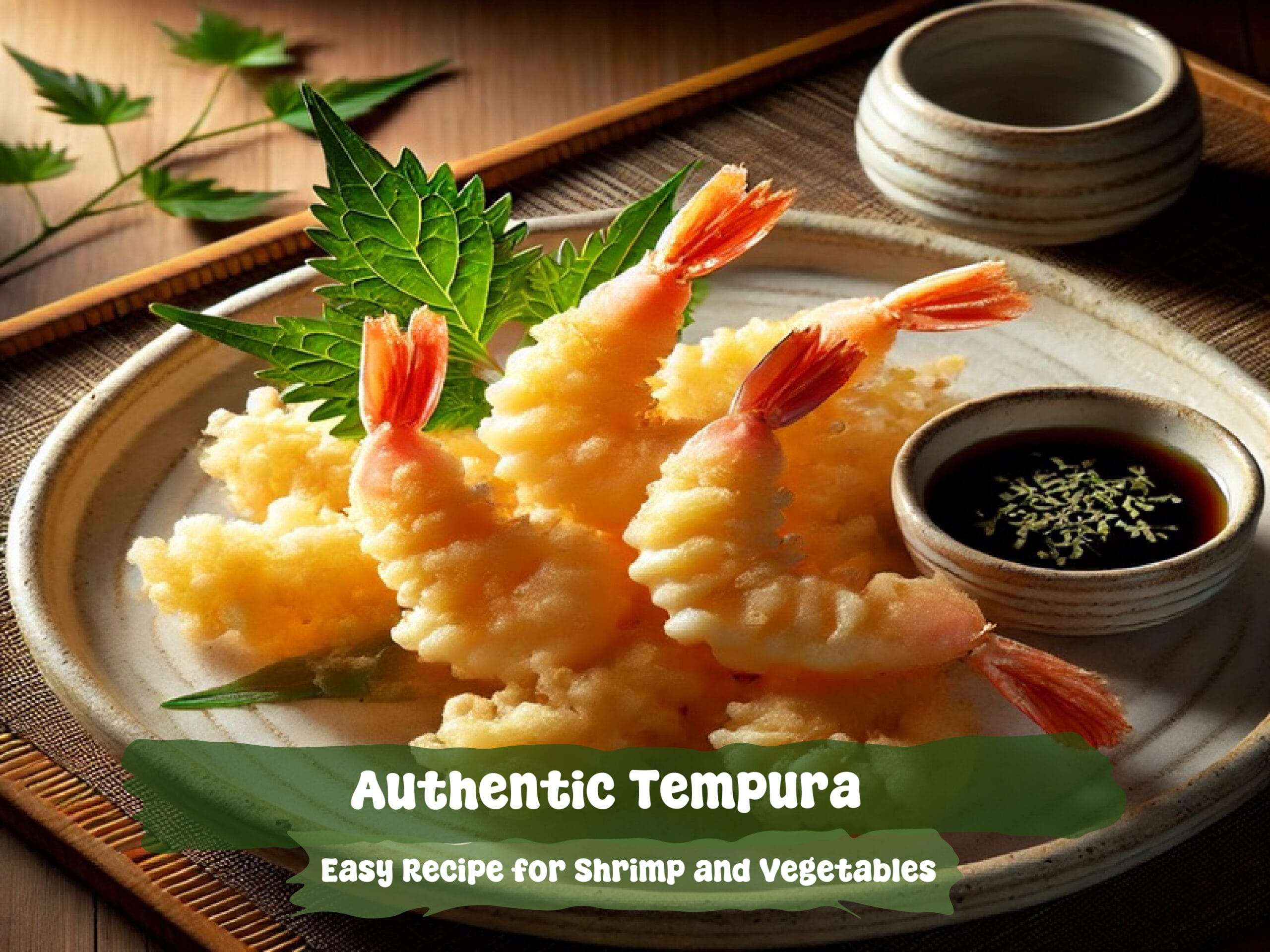
Easy Authentic Tempura Recipe for Beginners to Try
A proper Authentic Tempura Recipe focuses on precision and timing. The batter should stay light, cold, and slightly lumpy. Overmixing or letting it warm up makes the coating heavy and oily. Using chilled sparkling water or ice cubes in the batter helps achieve that signature crispiness without absorbing too much oil.This recipe guides you to make classic Japanese tempura with a crisp, airy texture that complements shrimp, vegetables, or seafood.Difficulty: Moderate
Ingredients
Method
Prepare the ingredients.
- Pat shrimp and vegetables completely dry. Slice vegetables into uniform, thin pieces for even frying. Keep everything chilled until ready to fry.
Mix the batter
- In a bowl, lightly beat the egg, then add ice-cold sparkling water. Gently stir in the flour and cornstarch using chopsticks or a fork, but do not overmix. The batter should remain slightly lumpy and cold.
Heat the oil
- Pour vegetable oil into a deep pan or wok and heat to 340–360°F (170–180°C). Maintain this temperature for consistent crispness.
Coat and fry
- Dip each ingredient lightly into the flour, then into the batter. Gently lower yourself into the hot oil. Fry 2–3 pieces at a time to avoid overcrowding. Cook for about 2 minutes or until pale golden. Remove and drain on paper towels or a wire rack.
Make the dipping sauce
- Combine dashi (or water), soy sauce, and mirin in a small saucepan. Warm gently over low heat and serve with grated daikon, if using.
Serve
- Arrange tempura on a plate lined with paper to absorb excess oil. Serve immediately with a dipping sauce while they are still crisp.
Video
Notes
Batter temperature: Keep it cold for crisp results, adding ice cubes if needed.
Oil temperature: Too low makes tempura greasy; too high burns it.
Small batches: Fry a few pieces at a time for even cooking.
Flour tip: Use low-gluten flour for a lighter texture.
Best texture: Serve right away. Temper loses its crispiness if it sits.
Tips & Tricks
- Keep the batter fresh: Make a new batch if it thickens or warms up.
- Quick draining: Use a wire rack instead of paper towels to keep the coating dry.
- Crispier finish: Replace a few tablespoons of flour with cornstarch.
- Variation: Try squid, fish fillets, or even shiso leaves for authentic Japanese flair.
- Storage: Tempura is best eaten fresh, but you can reheat leftovers in an oven at 350°F for 5–7 minutes.
Serving Suggestions
- Traditional style: Serve with warm tentsuyu sauce and grated daikon.
- Rice bowl: Top with steamed rice for tempura donburi.
- Noodle meal: Pair with soba or udon noodles.
- Appetizer: Offer alongside sushi or miso soup.
- A vegetarian option: Use all vegetables. Sweet potatoes and zucchini work especially well.
Nutrition (per serving, based on 4 servings with shrimp & vegetables)
- Calories: ~310
- Protein: 16 g
- Carbs: 28 g
- Fat: 15 g
- Fiber: 2 g



